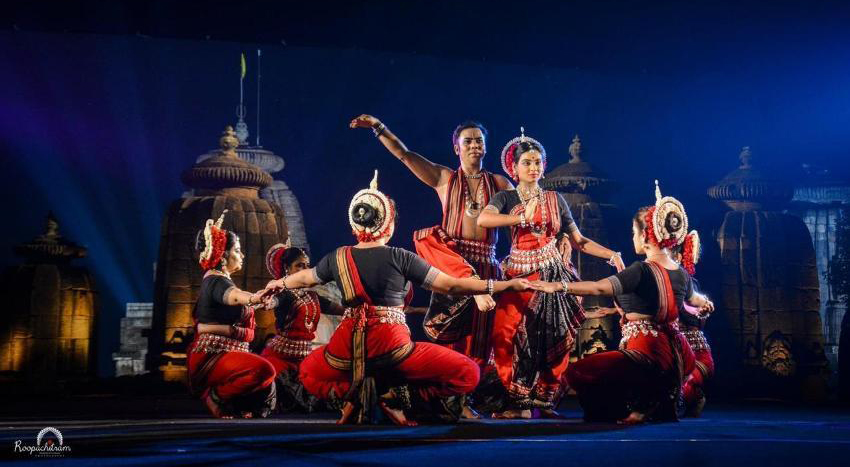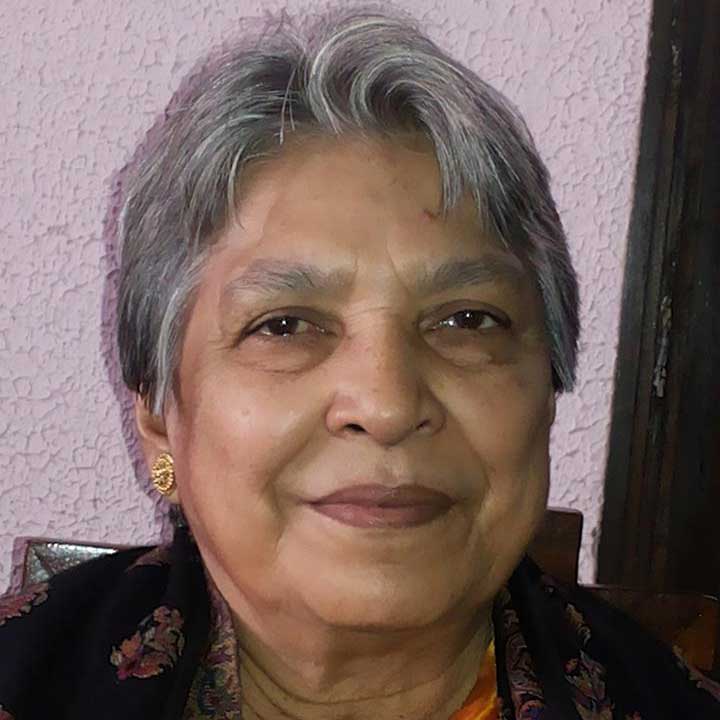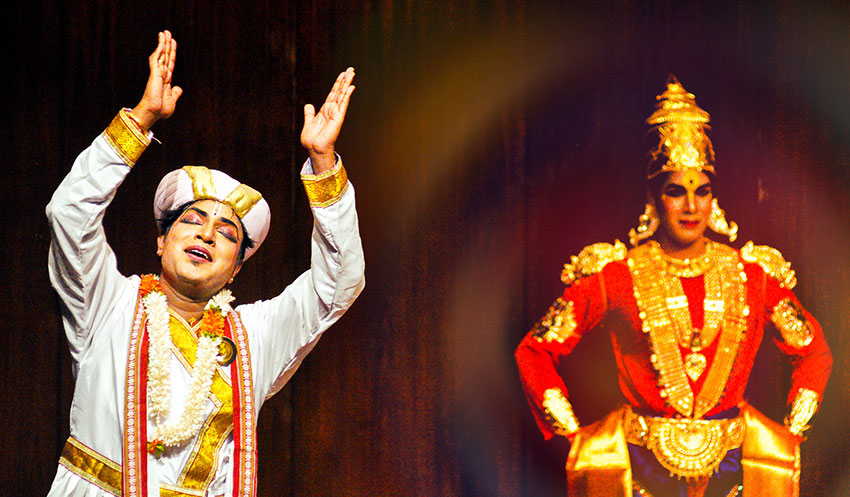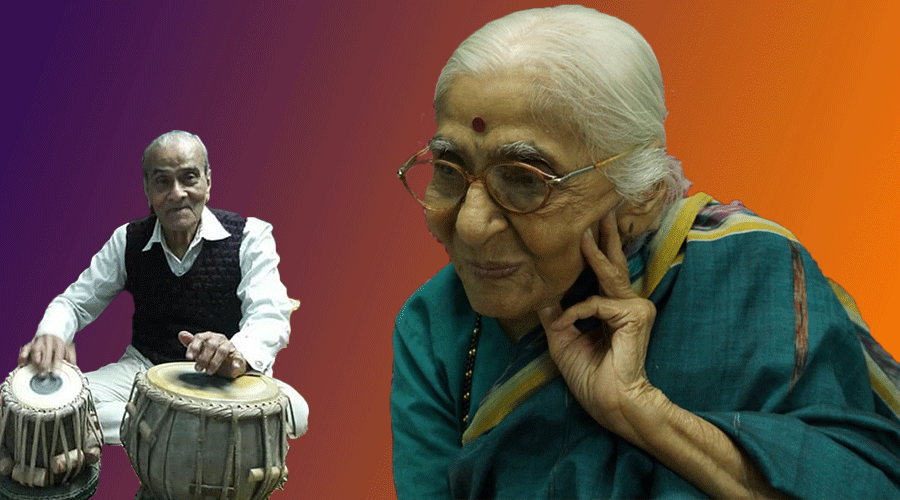The 10th century Mukteswar temple in Bhubaneswar is a gem of a Nagara architecture mainly because of its unique torana found in no other temple in Odisha. What can be a better venue than this for holding a festival of Odisha’s traditional heritage of a dance genre resurrected from reliefs and cultural friezes found in Udaygiri and Khandagiri caves in erstwhile Kalinga that have existed from first century BCE.
Shiva here is Mukteswar, who bestows freedom from the cycle of birth and death.
The Mukteswar Festival- a three-day long festival is a connoisseurs delight. It is the choicest festival in the country, showcasing Odissi dance form. The architectural beauty of this ancient Odishan temple matches the dance style. If one wants to get the real flavour of Odisha, a visit to the Mukteswar Festival of dance should be in their itinerary.
Unlike the festival held in Konark, an unwritten decree seems to work on performers wherein most are led to draw themes related to Shiva who is the ultimate bestower of peace. It is a kind of mass meditation seeking salvation through performing and watching dance and listening to music.
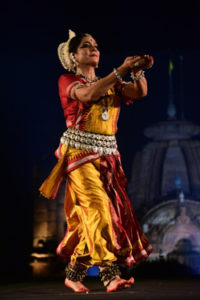
In keeping with the sanctity of the venue, each evening had a musical group led by their guru sing in praise of Shiva in his various manifestations. It was the turn of Guru Maheswara Rao to begin this unique festival to sing Sivastuti with his disciples to set the mood of the programme. After his musical soiree much-acclaimed Odissi exponent Meera Das invoked the blessings of Mukteswar who cleanses the world of all that is evil. That was just the start of all good things to come. Set to raga Bairagi and Tala- Ektali, she rejoiced dancing to her own composition with the dexterity of a skilled performer. The piece grew in Meera’s hands with love and care. With Bilahari Pallavi she extended her joy in pure dance and music. The graceful and lyrical movements supported by intricate rhythm and complex patterns created a kind of meditation through a combination of rhythm, music and movement. This was a composition of the doyen of Odissi dance, Padmabibushan Guru Kelucharan Mohapatra set to Pandit Bhubaneswar Mishra’s music. Her abhinaya was in bhakti ras, enacting the life of a devotee who waited her whole life to ultimately meet her God. In this piece, one heard the mingling of many ragas.

Each evening both upcoming artists and veterans are given a chance to grace the stage to regale the audience. Young aspirants Preetisha Mohapatra and Reebdhita Barua -from the house of Srjan- performed a duet. Both of them – in excellent form- presented “Anweshana”, In their search for fulfilment through their dance. Praising Mukteswar they earned much praise by their committed dancing. They explored the inherent connection of dance and music through Yugmadwanda Pallavi taking care to touch upon the minute nuances of pure dance. There was a sort of challenge thrown and challenge accepted by the dancers and the singers sprinkling powerful ingredients to add flavour. Here Guru Ratikant Mohapatra worked with his choreography to suit the musical composition of Guru Raghunath Panigrahi. They concluded with their much-praised choreographic work of Guru Ratikant Mohapatra Sri Ramchandra Kripalu Bhajamana from the works of Saint Tulsi Das. The duo was matchless.
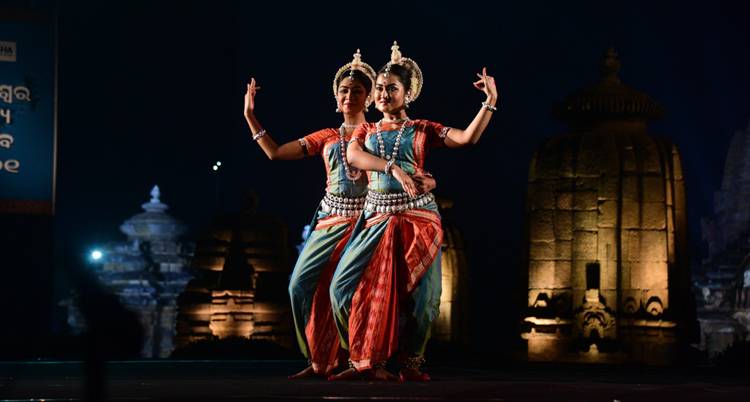
As is the practice in the Mukteswar Festival there was a group performance by the disciples of Guru Lingaraj Pradhan as the concluding piece of the first day’s programme. A set of superbly trained dancers performed Ganesh Vandana, Kirwani Pallavi and the abhinaya piece Devi Shakti to a rich musical composition.
The audience greeted the second evening with the musical ensemble of Pandit Swapneswar Chakraborty rendering the musical compositions of Uma Maheswara Stotram and Nataraja Stotram after paying obeisance to Shiva the reigning deity of Mukteswar Temple. Having set the tone of the evening the solo dancer Ramesh Chandra Jena sailed through his dance pieces-Haragowriastakam and Viswo Prakasha. Haragowriastakam basically dealt with the concept of Ardhanariswar, where the philosophy of Shiva and Parvathy exists in one body as an inseparable entity. Viswo Prakasha literally means illuminating the universe, based on a work of the tribal poet Bhima Bhoi who envisaged a world free of agony where the voice of god will prevail. Traumatized human beings asking the Divine to give them back their liberty. The mysticism of the works of Bhima Bhoi was translated into Odissi dance. The concept, choreography and the text design was by Guru Aruna Mohanty and Kedar Misra. Ramresh Jena’s flawless rendition made the evening. The piece touched upon a contemporary theme.
Durgacharan Ranbir Artistic Director of Nrutyayan has churned out many a talented dancer sure to be acclaimed by connoisseurs and critics alike. His disciples Satabdi Mullick and Niladri Mohanty regaled their audience at Mukteswar with “Shiva Rupa Mahadevanka Dhyana” Mangalacharan, where they offered Puspanjali to Lord Mukteswara. This was followed by the duet presentation of Pallavi on Raag “Rageshwari”. Their concluding duet presentation was “Baidyanath Panchapadi” Abhinaya, based on Lord Shiva, who is known as the Destroyer within the Trimurti -the other two murtis being Brahma and Vishnu.

Sukanta Kumar Kundu’s music was very good as was the rhythm Composition- Guru Sri Dhaneswar Swain
Dance Choreographer – Guru Sri Durga Charan Ranbir-of Debaprasad style is a fitting torch-bearer of the style. Both Satabdi and Niladri reached out to the audience by the power of their dance.
Artistic Director Dona Ganguly of Dikshamanjari ‘s team led by her talented dancer Raghunath Das presented Dasavatar, Shankaravarnam Pallavi and Ardhanariswar. Ardhanariswar in the group is no less in beauty than performed in duet. The choreography with young and youthful dancers complemented the duo who were in the role of Shiva and Parvathy. The sculpture-like friezes looked ethereal. A set of well-trained dancers performed the two pieces with perfection. Raghunath Das, needless to say, performed excellently.
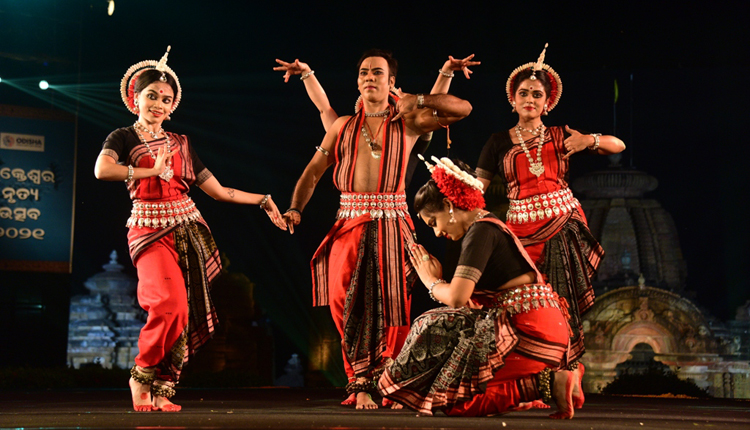
The third day took off with Srinibas Satpathy Shiva.
Solo dancer Sonali Mohapatra a disciple of Guru Durga Charan Ranbir is passionate about her dance. In spite of her impaired hearing, both guru and sishya left no stone unturned to follow the goal to be a performer. Durgacharan Ranbir has looked after her special need and today she is a performer by her own right. That she was given a platform in the prestigious Mukteswar festival has been a landmark event in her life. Sonali performed Shiva Mangalacharan- to a composition of Sukant Kumar Kundu. Her abhinaya piece to an Odia song ‘Sajani go najani pirate jaha kali’ was choreographed and composed by Durgacharan Ranbir.
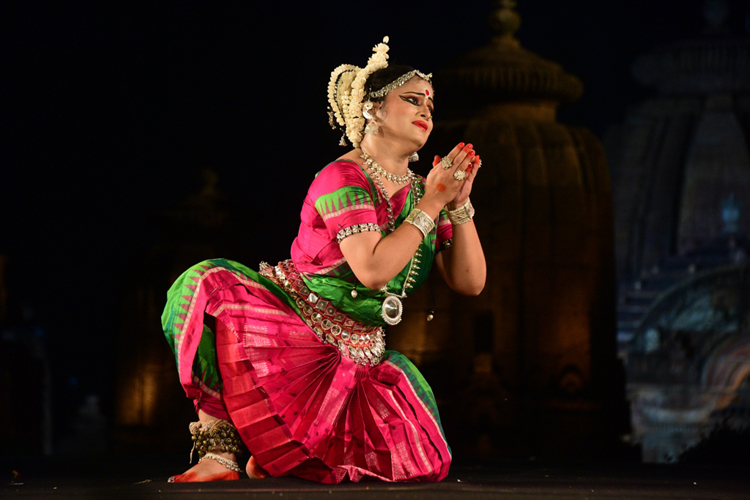
Eternal love was the theme of dancer extraordinaire and creative artist Aruna Mohanty’s choreography of the story of Sumukha and Gunakeshi whose love encompassed marthalok and swargalok and bound them together forever – performed in duet. The engrossing piece was from a lesser-known story of the Puranas. Gunakeshi’s meeting with Sumukha, the young and handsome prince of Naga, the Serpent king whose imminent death in the hands of Garuda, his avowed enemy, was poignantly portrayed. At the end of a long story with many twists and turns the two are united in heaven. The script in the hands of Late Kamal Lochan Mohanty and lyrics from Kedar Mishra to a Composition of Guru Ramhari Das and rhythm Composition of Guru Dhaneswar Swain blossomed into a multihued flower. The dancers just had to string their act together to present the many-layered drama. Shreepunya Mohanty & Pratap Bariki paid their fitting tribute to their guru Aruna Mohanty by being in their best. A strong group of accompanist supported them.

Artistic Director Jyotsna Rani Sahoo of Soor Mandir Cuttack performed Shivamaya Nataraja along with her group of dedicated and talented artists.
Shivamaya Nataraj is the cosmic dance of Shiva symbolizing the interplay of dynamic and static divine energy. Principles of eternal energy consist of Creation, Preservation and Destruction, illusion and emancipation. Shiva dances Rudra Tandava, which is basically a dance of destruction and then once again starts the cycle of Creation and Preservation. The icon of Shiva and what each part symbolizes was described in great detail. This piece includes Sabdaswarapata based on the Natya Sastra to symbolically make the surroundings Shivamaya. Shivamaya and the following piece Rasanuraga were scripted by Dr. Er. Ghatuary. Rasanuraga was the story of union and separation between lovers during monsoon when the fragrance of the rain-soaked soil and the dance of the peacock makes the lovelorn heroine pine for her lover. Her letter is carried by a bird to where her lover is, who in turn sends a reply expressing his love. Though romantic, this method of communicating between lovers is to be found in Kalidas’ Meghdoot. However, the happiness of the nayika was contagious, percolating to the audience who basked in the heroine’s hope of uniting with her lover.
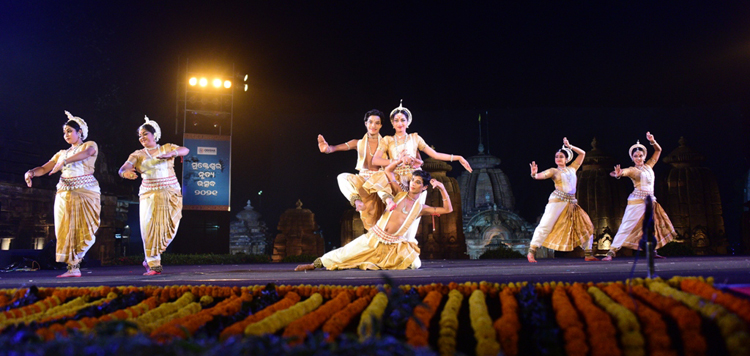
Kirtee Kalavati was a pure dance in raag Kalavati. The music and the dance gradually reached a crescendo tracing multiple patterns creating stances of lyrical beauty. Jyotsna Rani Sahoo’s compositions proved her credentials as a dancer /teacher of great sensitivity. Shanti Mantra was literally the finale of the 2021 Mukteswar Festival.



